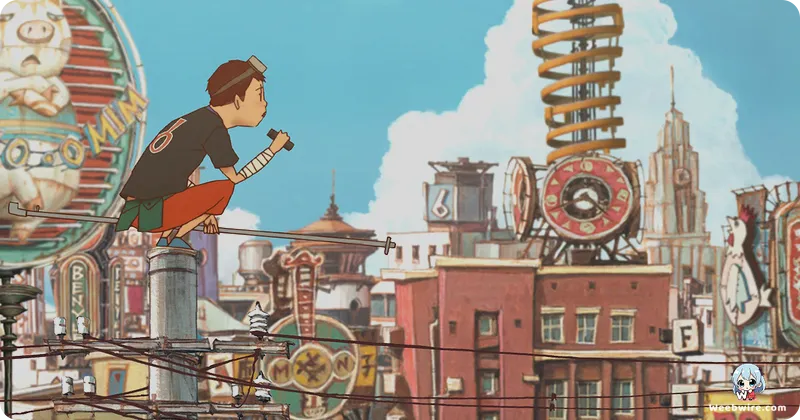Unveiling Tekkonkinkreet: The Masterpiece's Groundbreaking Production and Enduring Legacy

Beyond its striking visuals and high-octane action, the 2006 cinematic masterpiece, Tekkonkinkreet, unveils a rich tapestry of lesser-known facts and fascinating behind-the-scenes stories that underscore its enduring legacy. Directed by the visionary Michael Arias and animated by the groundbreaking Studio 4°C, this film, an adaptation of Taiyō Matsumoto's iconic manga, transcends mere cyberpunk spectacle to offer a profound exploration of innocence, urban decay, and the intricate human psyche. It's a treasure trove of unique insights even for the most devoted fans, revealing how it pushed the boundaries of what anime could be and continues to resonate with audiences worldwide.
A Visionary Director's Unprecedented Journey
A pivotal aspect of Tekkonkinkreet's uniqueness lies in its director, Michael Arias. An American digital effects artist with a deep appreciation for Japanese animation, Arias made the groundbreaking decision to helm a feature-length Japanese anime film, a rare feat for a non-Japanese individual. His unwavering dedication saw him spend years immersed in Japanese culture and production intricacies, meticulously studying the nuances of the animation industry and collaborating closely with his Japanese counterparts. This commitment ensured an authentic yet fresh perspective. The result was a film that masterfully synthesized Western narrative sensibilities with a distinctively Japanese aesthetic, creating a truly unparalleled cinematic experience that defied conventional expectations.
Studio 4°C's Artistic Alchemy
Studio 4°C, renowned for its experimental and avant-garde approach to animation, proved to be the ideal collaborator for such an ambitious project. Their animators meticulously translated Matsumoto's highly stylized line work, dynamic paneling, and unique character designs into fluid motion, maintaining the manga's raw energy and philosophical depth while elevating it to a new cinematic plane. The studio's willingness to push artistic boundaries, evident in works like Mind Game and Animatrix, allowed Tekkonkinkreet to achieve its distinctive visual style, characterized by its hand-drawn feel combined with sophisticated digital techniques. This blend brought Takaracho to life with an almost palpable grittiness and vibrant chaos.

The Manga's Profound Roots and Urban Heartbeat
Taiyō Matsumoto's original manga, Tekkon Kinkreet, was a trailblazing work in itself, defying traditional conventions with its expressive art and deep psychological themes. The title, a child's mispronunciation of “reinforced concrete,” subtly yet profoundly hints at the urban landscape and the resilience of its young protagonists, Kuro (Black) and Shiro (White). Their complex, symbiotic relationship forms the emotional core of the film, symbolizing the fundamental duality between darkness and light, innocence and harsh reality. Kuro, the street-smart and aggressive protector, embodies the harshness of their world, while Shiro, the childlike and naive dreamer, represents the innocence they desperately cling to. This dynamic interplay is central to the film's exploration of survival and identity within a crumbling world.
The bustling, chaotic city of Takaracho stands as a character in its own right—a vibrant, decaying urban labyrinth brought to life with painstaking detail by Studio 4°C. Its intricate alleyways, towering skyscrapers, and dilapidated structures mirror the film's complex themes of urban blight, corruption, and the enduring human spirit. The city is not merely a backdrop but an active participant in the narrative, shaping the lives of its inhabitants and reflecting their struggles and hopes.
Unconventional Soundscapes and Stellar Voice Acting
Adding further distinction is the film's unconventional score by British electronic duo Plaid. Their IDM and ambient soundscapes perfectly complement Tekkonkinkreet's gritty, surreal atmosphere, enhancing the emotional depth and tension without ever overpowering the visuals. The music becomes an integral part of the narrative, underscoring the film's unique blend of raw urban realism and fantastical elements. The innovative voice casting, featuring mainstream actors like Kazunari Ninomiya as Kuro and Yū Aoi as Shiro, further grounded the fantastical elements in a relatable human experience. Their nuanced performances brought a profound authenticity to the complex relationship between the two protagonists, making their bond truly believable and emotionally resonant.
Through its visionary direction, groundbreaking animation, profound thematic depth, and meticulous world-building, Tekkonkinkreet remains a revered cult classic. It is celebrated not just for its visual splendor but for the countless fascinating nuances that unfold with each viewing, solidifying its place as an enduring work in anime history and a testament to the power of collaborative, boundary-pushing storytelling. Its exploration of childhood, urban decay, and the fight for innocence continues to captivate and inspire, proving its timeless appeal.
Credits
Tekkonkinkreet
Author
Taiyō Matsumoto
Cover Art
Shinji Kimura (Art Director) / Taiyō Matsumoto (Original Creator)
Studio
Studio 4°C
Publisher
Shogakukan
Producers





